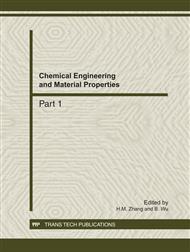p.147
p.151
p.156
p.161
p.165
p.170
p.175
p.180
p.184
Study on the Resistance Spot Microwelding Parameters of Copper and Nickel-Plated Steel Dissimilar Metals
Abstract:
0.2-mm-thick copper and 0.3-mm-thick nickel-plated steel dissimilar metals were jointed by resistance spot microwelding. The processing parameters were optimized by orthogonal experimental and influence of processing parameter on the morphology and microstructure of welded joint was studied. The results show that the optimized processing parameters that can get the maximum tensile-shear force are: preheat current is 0.8KA, welding current is 3.5 KA, up time is 0.5ms, preheat current is 2ms, cool time is 0.5ms, welding time is 5ms, and electrode pressure is 20N. With the optimized processing parameters, the tensile-shear force of the welded joint can achieve 108.9N. The microstructures of welded joint that has best tensile-shear force are composed of swirling structure in weld nugget, uniform distribution of copper in weld nugget with a little of nickel.
Info:
Periodical:
Pages:
165-169
Citation:
Online since:
December 2011
Authors:
Price:
Сopyright:
© 2012 Trans Tech Publications Ltd. All Rights Reserved
Share:
Citation:


